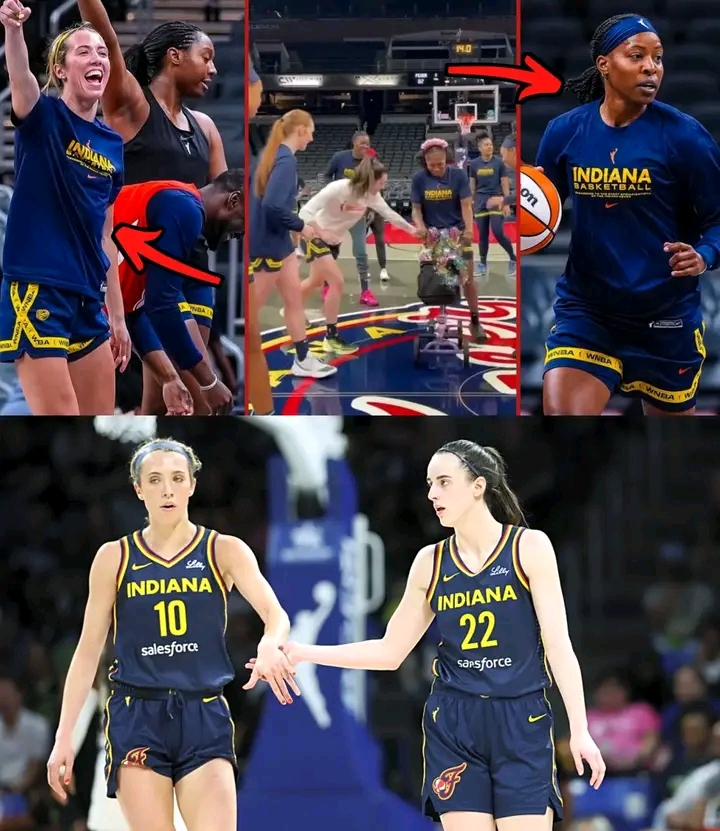
Depeche Mode, a name that has echoed through the annals of electronic music and pop culture, remains one of the most influential and groundbreaking bands to emerge from the 1980s. Formed in Basildon, England, in 1980, Depeche Mode’s journey through the music industry has been nothing short of transformative. Known for their synthesis of electronic music, gothic undertones, and new wave aesthetics, the band’s legacy is not only embedded in their sound but also in the powerful visual identity they have cultivated over the years. From album covers to live performances, and music videos to photography, Depeche Mode’s visual presentation has left an indelible mark on the pop landscape, influencing both the music industry and visual culture at large.
This article delves into the lasting impact of Depeche Mode’s visual identity, examining how the band’s aesthetics have played an essential role in shaping their legacy and why they continue to resonate with fans, artists, and designers alike.
The Power of Iconic Album Artwork
At the heart of Depeche Mode’s visual identity lies their album artwork, which has always been as innovative as their sound. Each cover is a reflection of the band’s evolving style, often offering a subtle narrative that complements or enhances the themes of their music. Throughout their career, Depeche Mode has consistently worked with some of the most talented graphic designers, photographers, and visual artists, each collaboration contributing to the band’s iconic visual reputation.
Depeche Mode’s 1984 album Some Great Reward remains one of the most iconic examples of their innovative use of design. The cover art, featuring a black-and-white image of a man’s hand with a stigmata-like wound, was paired with striking typography that reflected the band’s dark, brooding sound. This collaboration with photographer and designer Anton Corbijn, who would go on to become a longtime creative partner of the band, set the stage for a series of visually powerful album covers.
In the years that followed, the use of stark imagery became a hallmark of Depeche Mode’s visual identity. Violator (1990), arguably their most successful album, not only produced massive commercial hits but also featured some of the most memorable visuals of the band’s career. The iconic image of a rose with a black background, designed by Corbijn, became synonymous with the album’s themes of love, pain, and sensuality. The simplicity and elegance of the design were a departure from the often cluttered, busy visuals of the time, making it instantly recognizable and timeless.
Songs of Faith and Devotion (1993) featured another powerful visual statement with its cover art, depicting the band in shadowy, gothic hues that matched the album’s darker and more introspective tone. Corbijn’s photography continued to serve as the bridge between the emotional depth of the music and its visual counterpart, often making the images as haunting as the sounds.
But it wasn’t just the art on the covers themselves that made Depeche Mode’s visuals so striking; it was their ability to create a cohesive visual narrative that aligned with their music. The artwork and design became part of a broader artistic language that extended beyond the album’s physical form. Through consistent, thoughtful visual choices, Depeche Mode became a brand in the truest sense—a carefully crafted aesthetic that enveloped everything they did.
The Influence of Anton Corbijn: Visual Architect of Depeche Mode
Perhaps no figure has been as integral to Depeche Mode’s visual identity as Anton Corbijn. A Dutch photographer and director, Corbijn’s collaboration with the band began in the early ’80s, and his influence on their visual language cannot be overstated. Corbijn’s photographic style—dark, atmospheric, and intimate—was an ideal match for Depeche Mode’s music, which often explored themes of alienation, desire, and introspection. His ability to capture raw emotion and understated beauty is reflected in many of the band’s most iconic images.
Corbijn’s vision for the band transcended the usual role of a photographer or designer. He became a visual storyteller, constructing worlds around Depeche Mode’s sound that expanded the emotional resonance of their music. His approach was minimalist and precise, using natural light, shadow, and stark backgrounds to create a sense of mystery. As the band’s official photographer and video director, Corbijn not only designed album covers but also shaped the visual aesthetic of music videos and live performances, contributing to the creation of the band’s larger-than-life presence.
One of the most memorable visual moments crafted by Corbijn was the video for Enjoy the Silence (1990). The video’s iconic imagery of lead singer Dave Gahan dressed as a king in a royal cape, walking alone across varied landscapes, epitomized Depeche Mode’s mix of vulnerability and power. Corbijn’s minimalist, contemplative visual style elevated the song, making it a cultural touchstone.
The Evolution of Depeche Mode’s Music Videos
Music videos have been one of the most powerful vehicles for Depeche Mode’s visual identity, with the band’s groundbreaking approach to the medium leaving a lasting imprint on the genre. Their early music videos, such as Just Can’t Get Enough (1981) and Everything Counts (1983), were indicative of the ’80s new wave aesthetic, featuring bold colors and playful designs. However, it wasn’t long before the band started incorporating darker, more conceptual visuals that aligned with their increasingly somber sound.
One of the band’s most famous videos, Personal Jesus (1989), is a perfect example of how Depeche Mode used music videos as an extension of their visual identity. Directed by Corbijn, the video featured striking imagery that captured the song’s themes of religion, salvation, and devotion. The video’s narrative—a series of individuals grappling with their personal struggles—perfectly encapsulated the song’s deep emotional resonance.
But it was Enjoy the Silence, released a year later, that truly pushed the boundaries of what a music video could be. The video, which features Gahan walking alone through stunning European landscapes, is a minimalist masterpiece. Corbijn’s choice to keep the visuals simple and atmospheric allowed the power of the song itself to take center stage. It is a perfect example of how Depeche Mode’s visual identity was never just about the image—it was about creating a mood that enhanced and deepened the music.
Depeche Mode’s video work also set trends for the entire industry. Their collaborations with Corbijn, as well as with other visionary directors like Martyn Atkins, transformed the music video format from a mere promotional tool into an art form. Today, Depeche Mode’s videos continue to inspire a new generation of musicians and directors, proving the timeless nature of their artistic vision.
The Legacy of Depeche Mode’s Live Performances
Another critical aspect of Depeche Mode’s visual identity lies in their live performances. From the early days of their tours in the ’80s to their elaborate stage shows in the ’90s and beyond, Depeche Mode’s concerts were always a spectacle of light, design, and motion. As the band evolved, so did their approach to live performances. With the help of talented stage designers, lighting experts, and video artists, Depeche Mode created immersive experiences that blurred the lines between music, art, and performance.
A defining feature of their live shows has been their use of intricate stage designs and stunning visual effects. Their Devotional tour (1993), for example, featured elaborate set pieces, massive video screens, and dynamic lighting that created an otherworldly atmosphere, matching the grandeur of the music. The theatricality of the performances enhanced the emotional experience for the audience, creating an unforgettable visual and auditory feast.
As the band matured, their live performances continued to evolve, incorporating more sophisticated technologies, including 3D projections and interactive elements. This innovation has kept their concerts fresh and relevant, ensuring that Depeche Mode’s visual identity remains vital and dynamic, even decades after their formation.
Depeche Mode’s Cultural Influence and Ongoing Legacy
Depeche Mode’s visual identity has not only influenced the world of music but has also seeped into broader pop culture. From the fashion world to graphic design, from art to photography, their aesthetics have impacted countless creative industries. Designers, visual artists, and photographers have drawn inspiration from Depeche Mode’s dark, minimalist style, with the band’s album covers often cited as visual references for other iconic works.
Beyond their direct influence, Depeche Mode’s visuals have become a symbol of a particular cultural moment—an era where the boundaries between music, art, and fashion were fluid and experimental. Their unique ability to mix industrial aesthetics with pop accessibility has ensured that their visual legacy remains relevant even today.
Furthermore, the lasting impact of Depeche Mode’s visual identity is evident in their ability to continue evolving without losing the essence of what made them great. In 2023, their Memento Mori album and tour highlighted the band’s timeless ability to reinvent their visual narrative while staying true to the themes that have defined their work for decades.
Conclusion: An Everlasting Mark
Depeche Mode’s visual identity has always been integral to their story. It has transcended the world of music to become a cultural touchstone. The lasting legacy of their artwork, music videos, live performances, and overall aesthetic has influenced generations of fans and artists. Their ability to craft a cohesive visual language that aligns with their emotional, sonically adventurous sound has ensured their place as one of the most influential and visually iconic bands in history.
Today, as Depeche Mode continues to inspire new generations of musicians and artists, their visual identity remains as relevant and vital as ever. The band’s artistry has shaped not only their own legacy but also the very nature of how music, art, and performance intersect in popular culture. In the mode of Depeche Mode, there is a timeless expression of innovation, beauty, and emotion—one that will undoubtedly endure for many years to come.






